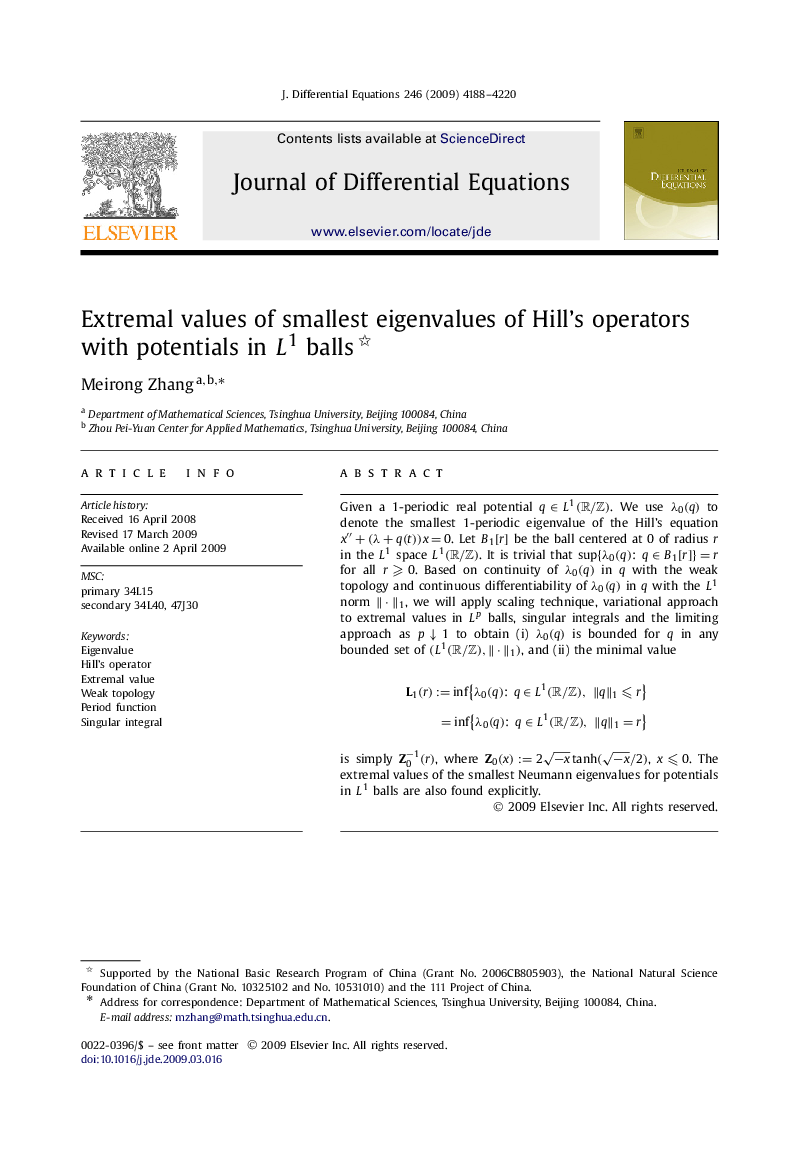| Article ID | Journal | Published Year | Pages | File Type |
|---|---|---|---|---|
| 4612831 | Journal of Differential Equations | 2009 | 33 Pages |
Given a 1-periodic real potential q∈L1(R/Z)q∈L1(R/Z). We use λ0(q)λ0(q) to denote the smallest 1-periodic eigenvalue of the Hill's equation x″+(λ+q(t))x=0x″+(λ+q(t))x=0. Let B1[r]B1[r] be the ball centered at 0 of radius r in the L1L1 space L1(R/Z)L1(R/Z). It is trivial that sup{λ0(q):q∈B1[r]}=r for all r⩾0r⩾0. Based on continuity of λ0(q)λ0(q) in q with the weak topology and continuous differentiability of λ0(q)λ0(q) in q with the L1L1 norm ‖⋅‖1‖⋅‖1, we will apply scaling technique, variational approach to extremal values in LpLp balls, singular integrals and the limiting approach as p↓1p↓1 to obtain (i) λ0(q)λ0(q) is bounded for q in any bounded set of (L1(R/Z),‖⋅‖1)(L1(R/Z),‖⋅‖1), and (ii) the minimal valueL1(r):=inf{λ0(q):q∈L1(R/Z),‖q‖1⩽r}=inf{λ0(q):q∈L1(R/Z),‖q‖1=r} is simply Z0−1(r), where Z0(x):=2−xtanh(−x/2), x⩽0x⩽0. The extremal values of the smallest Neumann eigenvalues for potentials in L1L1 balls are also found explicitly.
